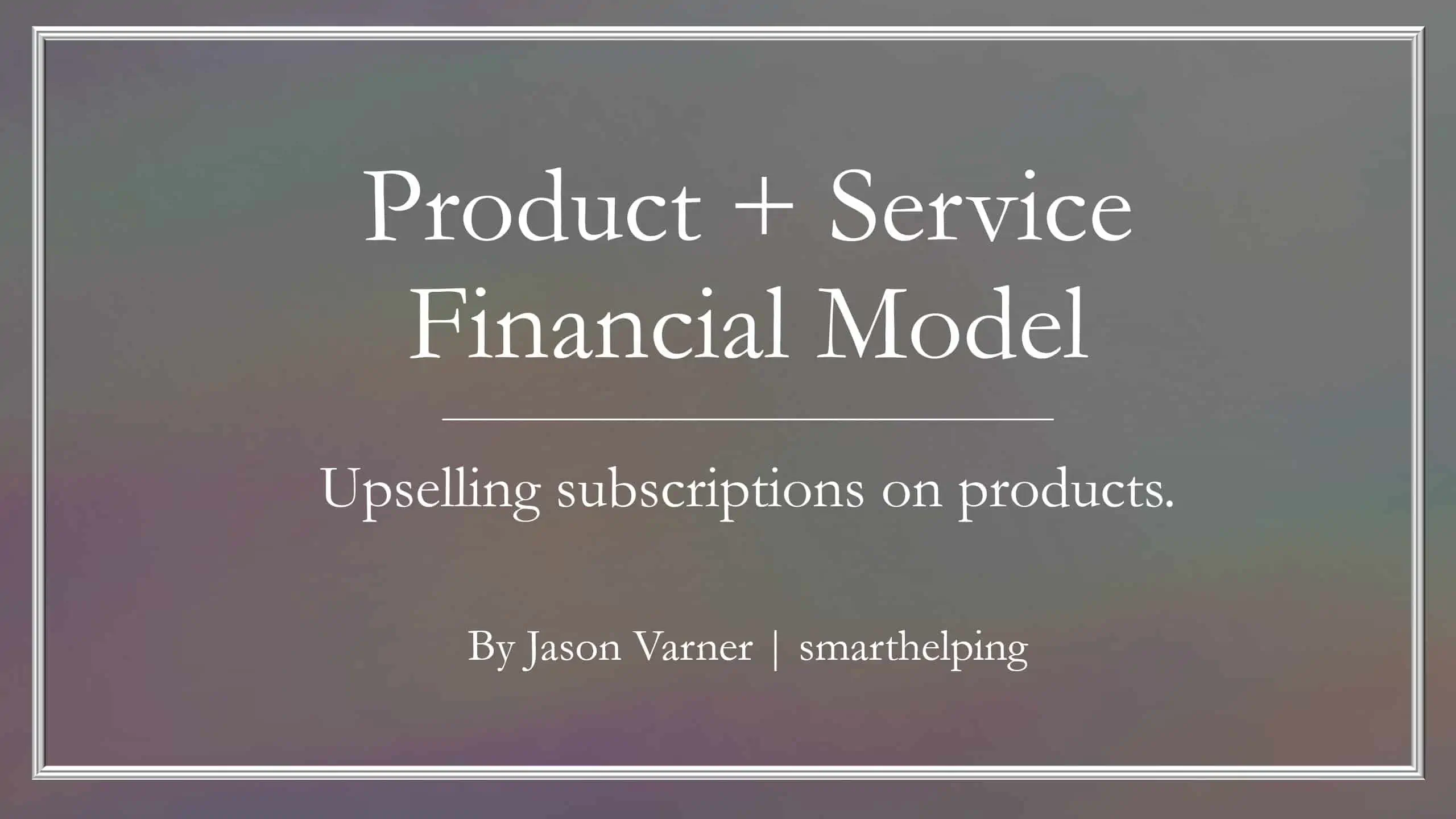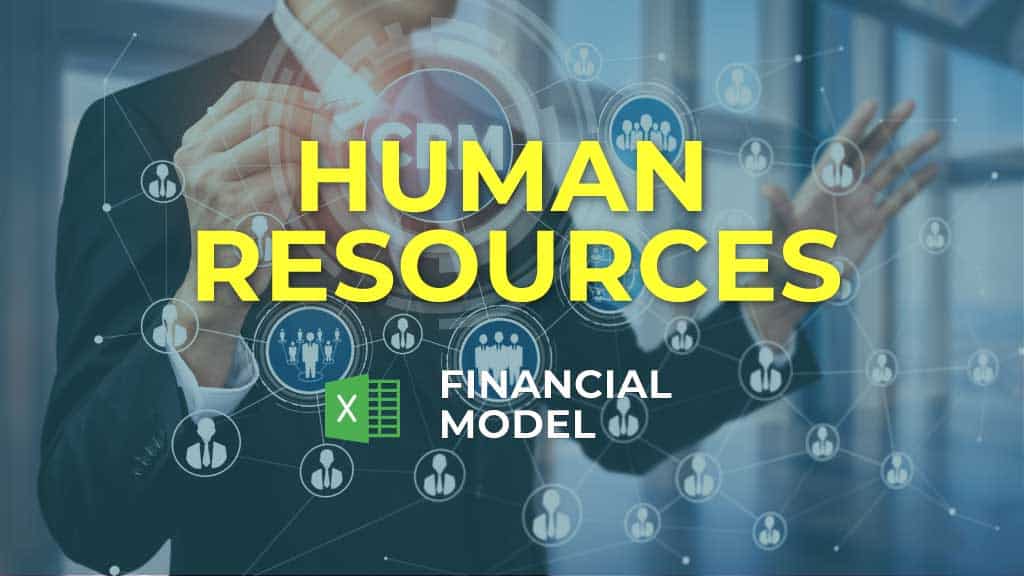Function-as-a-Service (serverless computing) Financial Model
Create financial projections for a FaaS cloud computing services business. This is a recurring revenue business that can be monetized through monthly subscriptions or usage.

Video Overview:
I was deep diving into research to make sure I got the logic right on this one. It is my first major computing financial model and we’ve got some amazing logic in this one. Some of the highlights include a customer cohort assumption layout for up to six customer types, each with their own retention curves and contract lengths. The number of customers that exist over time will drive all revenue pieces.
A FaaS business makes money by charging customers on a per request basis and this is usually denominated in GB-second usage, but there is also usually a charge for the raw number of requests (something like $0.20 per 1 million executions, but this can vary). It allows the model to have two primary ways to monetize, the first was a standard monthly subscription price. This first way would probably involve limits for each customer tier. The second is the usage charge (often giving a certain level of compute for free, before pricing kicks in).
Here are the assumptions to determine usage revenue (these are all configurable for each of the six customer tiers):
- Free GB-Seconds/customer/mo.
- Free Requests/customer/mo.
- AVG Functions/mo./customer
- AVG Seconds per Function
- Price Per 1 million Functions Requested
- GBs Used per Customer
- Price per GB-second Used
I also included an option for data transmission costs (in case the function requires data to be sent out of the network) and there is an optional price per GB for that as well as the expected amount of data sent out per customer per function.
I went even further. The user can determine how the usage of a customer changes over their tenure, based on a percentage change from the initial function requests per month. This applies dynamically to each monthly cohort of customers and each customer tier is independently configured.
For expenses, there is a standard overhead schedule for General and Administrative, Sales and Marketing, and Research and Development. The variable costs are robust as well. There are inputs for the cost per customer per month, up to two cost types per function executed, cost per GB transmitted, and some more miscellaneous cost of goods sold items. The major initial investment costs for a serverless compute business will come from infrastructure purchases (the hardware that is providing the service), which fall into non-cash depreciation expense. I also put a few catch-call COGS items that simply apply as a direct percentage of revenue. There will also be heavy research and development costs to build out the platform that developers can work on (how they plug their code into your execution environment).
There are payroll taxes / benefits that can be defined as an input percentage and the user can enter a ‘1’ next to each fixed cost item to denote it as a personnel cost that will require these costs to populate.
Another item that I wanted to make dynamic and scale with the number of customers was customer service reps. Each customer cohort has an input for the ratio of number of customers a given customer service rep can handle as well as the monthly salary of these reps.
The model can be run for up to 72 months, there is an option for an exit value based on a trailing 12-month revenue multiple per the end month.
More Features:
- Includes a 3-statement model (connected monthly and annual Income Statement, Balance Sheet, and Statement of Cash Flows).
- Includes a DCF Analysis / NPV.
- Includes an Executive Summary.
- Includes an option for outside / inside investors and their share of profits.
- Visuals for key financial metrics and advanced ratios such as average customer lifetime value to customer acquisition cost.
- More KPIs include LTV, CaC, months to pay back the CaC.
- Includes a lite version that only has a single customer type rather than six.
- Adjust pricing and cost assumptions to see what is feasible given certain volumes and customer growth / retention.
To better plan the capex items, I put a schedule at the bottom of the CAPEX tab that shows the number of GB-seconds in use, functions requested per month over time, and customer count. The capex spend should line up with that scale accordingly. There are slots for up to 46 CAPEX purchase events, which should be plenty to account for scale over the maximum forecast period.
More About This Business
FaaS, or Function as a Service, is a category within the cloud computing service model known as serverless computing. It plays a significant role in the business world by providing a way to run code in response to events without the complexity of building and maintaining the infrastructure typically required for such applications. Here’s a detailed explanation of how it works and its business implications:
How FaaS Works:
- Event-Driven Execution: FaaS runs code in response to events like HTTP requests, file uploads, or database operations.
- Stateless Functions: Each function is stateless and executes a specific task.
- Scalability: Automatically scales the number of function instances based on demand.
- Pay-as-you-go Pricing: Charges are based only on the actual usage — the time your function is running, measured in milliseconds.
Business Implications:
- Cost-Effectiveness: With FaaS, companies pay only for the compute time they consume, reducing the cost of maintaining idle server resources.
- Focus on Core Product: FaaS frees developers from server management, allowing them to focus more on developing the business logic of applications.
- Agility and Speed: Businesses can quickly deploy and update functions, enabling faster response to market changes and customer needs.
- Scalability and Reliability: Automatically scales with the application’s needs, ensuring reliable performance during demand spikes.
- Integration and Modern Architecture: FaaS is often used in microservices architectures and can easily integrate with other cloud services, enhancing application capabilities.
Use Cases in Business:
- Web Applications: Building scalable, event-driven components of web apps.
- Data Processing: For tasks like image or data processing that happen in response to an event.
- IoT Applications: Managing the high volume of data and events generated by IoT devices.
- API Backends: Creating scalable backends for applications without managing servers.
Challenges:
- Performance: Cold starts (initialization of a function) can affect performance.
- Complexity in Large Systems: Managing numerous functions and their interactions can become complex.
- Vendor Lock-in: Functions are often closely tied to a specific cloud provider’s infrastructure and services.
This template is included in my SaaS bundle as well: https://www.efinancialmodels.com/downloads/saas-financial-model-bundle-58492/
Similar Products
Other customers were also interested in...
Data-as-a-Service Financial Feasibility Study
This model is built for data-as-a-service startups. If you have valuable data to monetize, this temp... Read more
Product + Subscription Financial Model
Build a strategy for adding recurring revenues services to your product. Includes financial statemen... Read more
Product-as-a-Service (PaaS) Financial Model
This is a true PaaS model with flexible build-out assumptions, capacity sanity checks, and direct sa... Read more
Subscription Business – 10 Year Financial Model
Financial Model providing a 10-year financial plan for a startup or operating Subscription Business.... Read more
“Netflix for Gadgets” – Consumer-Tech Subscr...
An integrated, dynamic and ready-to-use financial model for Consumer-Tech Subscription/Rental Busine... Read more
Subscription Meal Kit Financial & DCF Valuatio...
We are glad to present our new integrated, dynamic and ready-to-use Subscription Meal Kit Financial ... Read more
Web Design Firm Financial Model – 5 Year Financi...
Financial Model provides an advanced 5-year financial plan for a startup or operating Web ... Read more
Fresh Flowers Subscription Financial Model Excel T...
Impress bankers and investors with a proven, solid Fresh Flowers Subscription Budget Template. Five ... Read more
Equipment Rental Subscription Financial Model Exce...
Order Equipment Rental Subscription Budget Template. This well-tested, robust, and powerful template... Read more
Human Resource Software Financial Model Excel Temp...
Get Your Human Resources Software Financial Projection. Spend less time on Cash Flow forecasting and... Read more
You must log in to submit a review.






























